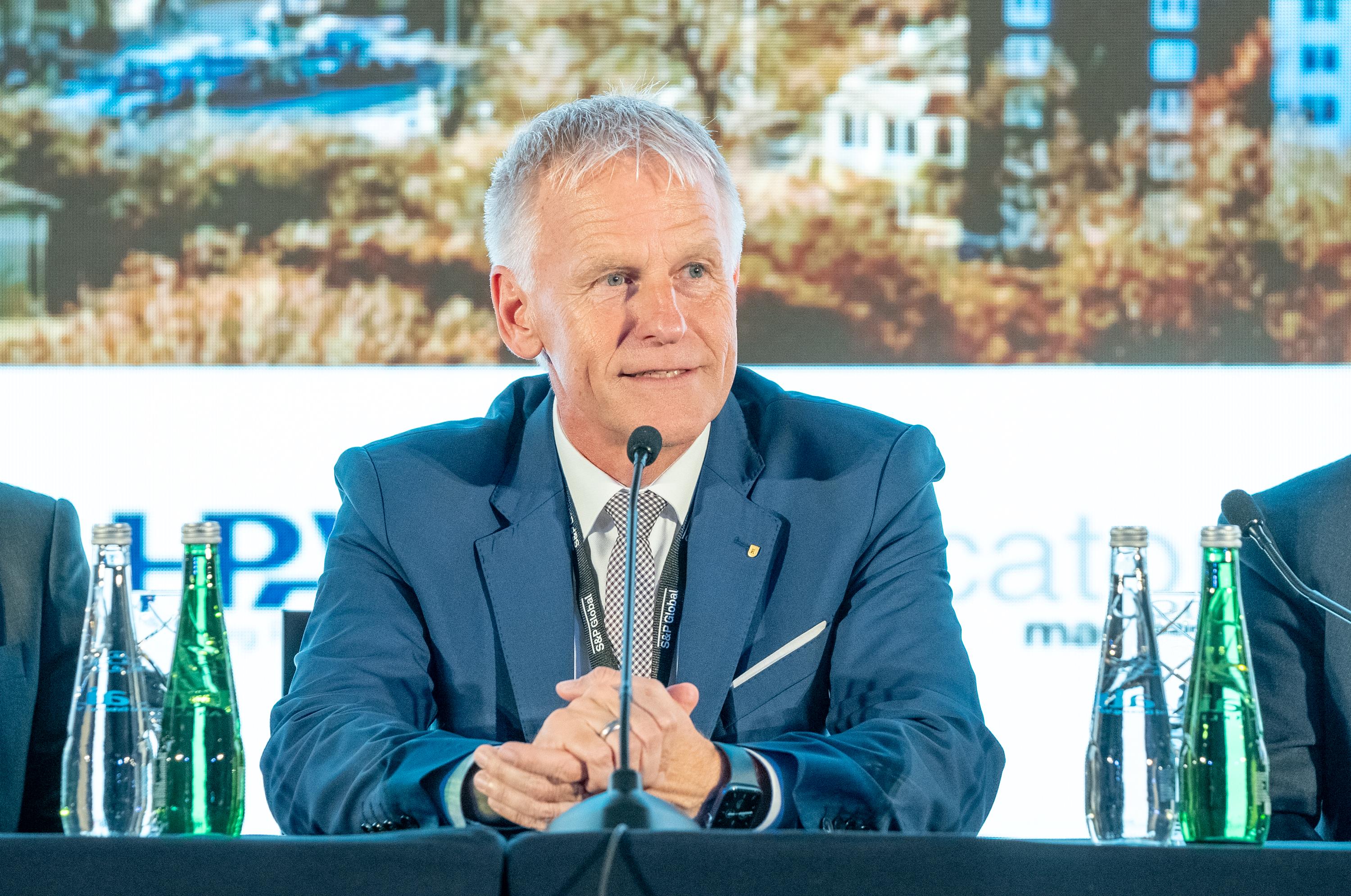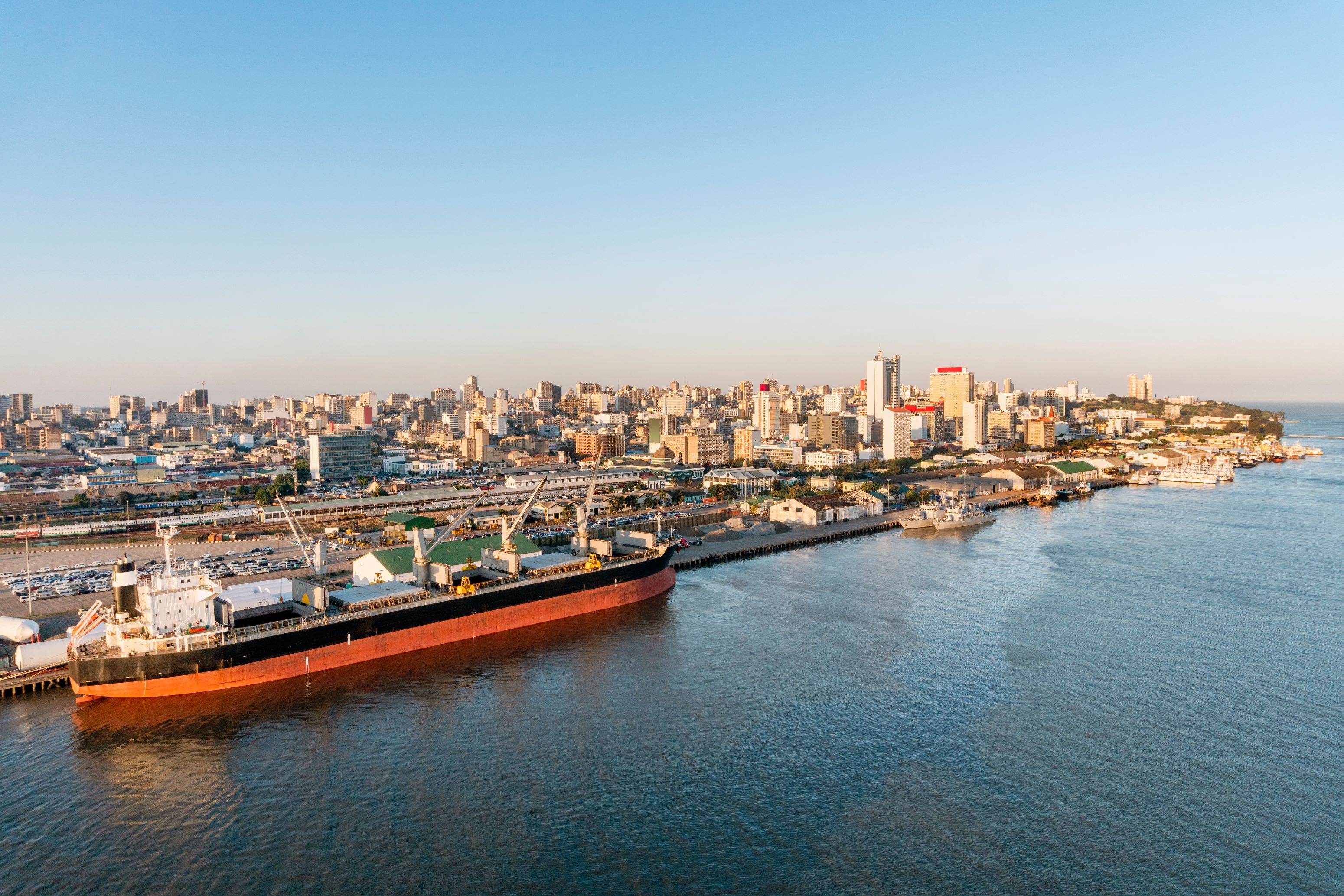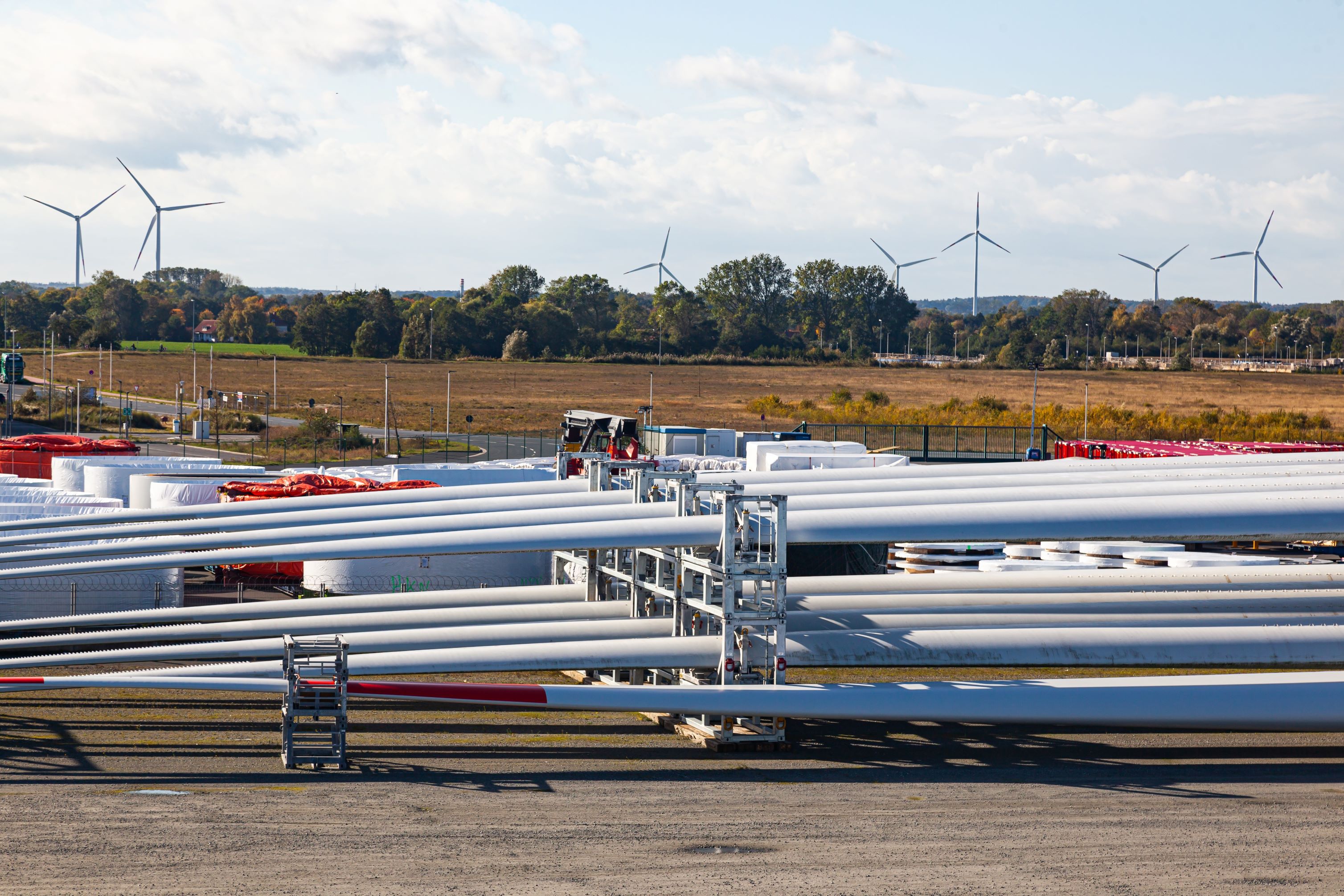Jens Meier: Ports in transition
Leadership Insights newsletter story
As crucial interconnectors between logistics and clean energy stakeholders, ports are playing a greater role than ever in driving maritime transformation, says new International Association of Ports and Harbors (IAPH) president and Port of Hamburg CEO Jens Meier.

You’re taking up your new role as president of the IAPH at a time of great change for maritime regarding decarbonisation. What are your core goals to help the port industry with the challenges this poses?
I want to emphasise open communication and non-competitive knowledge exchange among all members. We need to become more geopolitically resilient by aligning global standards that advance maritime digitisation and decarbonisation.
The effective and secure exchange of data, which affects both digitalisation and decarbonisation, is indispensable. However, achieving true resilience of ports also involves expanding our efforts in the field of cybersecurity.
What does cyber best practice look like for ports as well as across the supply chain?
The IAPH Cybersecurity Guidelines deliver best practice for port cybersecurity. First you have to identify typical risks. Then a holistic approach with protective, detective and reactive measures along the whole chain of port assets, including the workforce, is needed. You must implement both technical measures and also organisational processes such as awareness training for the staff, which is normally the weakest link in the chain.
Threat intelligence and information sharing via sharing platforms like the chainPORT initiative are vital to get timely information and indicators about incidents all around the world. There is no 100% security so business continuity plans (BCPs) are critical to restore operations following a major incident.
Supply chain risks are multifaceted so it is wise to implement a supplier and third-party risk management to monitor and handle the risk on the contractual as well as on the technical and processual level.
Are recent geopolitical issues having a major impact on global trade routes and how are ports adapting?
With the consequences of the pandemic, the war in Ukraine, the conflict in the Middle East and a strategic de-risking strategy towards China, the question of readjusting global supply chains is gaining in importance. Trade relations are closely embedded in a geopolitical context and are nowadays an instrument of foreign and security policy.
So far, we haven’t seen any major impacts on a global scale, however, there is a risk of geopolitical issues causing bottlenecks on global shipping routes such as the Suez Canal, then leading to major disturbances in global supply chains. Ports should consider building up capacity in cargo handling and storing to prepare for the ‘ketchup effect’ which usually sets in once supply chain snarls are disentangled.
While maritime experts expect a slight decrease in global container traffic for 2023, in the mid to long run we believe in growth of global container traffic. Therefore, it’s crucial for ports to continue investing in terminal operations, storage and logistics. In order to limit economic impacts, ports should seek to diversify and not solely rely on container handling.
When it comes to efficiency, what should ports be investing in, for example green technologies, automation, digitalisation, employee skills?
It should not be a matter of either or. These investments are made in the future of our communities, in the wealth of our countries, in the security and resilience of global supply chains.
I have learned in my career that there is no smart investment in digitalisation if you do not simultaneously invest in people and their skills – and there are no sustainable green technologies if you do not simultaneously take care of the financial business cases behind them. Green technologies, automation, digitalisation and employee skills all go hand in hand and belong at the top of our agenda.
Who is going to pay for the decarbonisation investments that ports need to make and how can financial and political risk be reduced?
Ports are great locations for the whole value chain around new energy. Import, export, offtake and distribution can be located in a regional cluster within short distances and shared infrastructure. Authorities and operators are ready to be more active, but they will not be able to shoulder all these investments on their own.
Ports need financial support by governments. Private investments have to be paid for by the private sector and public money should support non-mature markets. Ports also need international platforms and institutions with neutral status, like IAPH, to ensure a level playing field and to support these initiatives. Working together, IAPH, ICS and other stakeholders like IMO can help ports in developing countries to make these investments and develop the needed strategies.
Do you think that governments and other industries seeking to decarbonise are wholly aware of the vital role that ports and shipping will play in achieving their goals?
Ports and port authorities need a stronger voice. They have been key energy hubs for a long time and they will be in the future. We have to differentiate between two important functions. One is as key hubs for the trade of alternative energy sources such as hydrogen and its derivatives. The other is being important sites for producing and distributing alternative fuels for shipping.
Germany is currently adopting a new national port strategy. One key aspect is to recognise these two key functions of ports and thus set the frame for all stakeholders to act on it.
How are initiatives like Clean Energy Marine (CEM) Hubs helping to unlock the production, transportation and use of low-carbon fuels?
The CEM Hubs initiative is crucial because the energy transition requires a massive scale of cross-sectoral collaboration and supportive regulation. Ports play a key role as enablers for access to alternative fuels, not just for shipping but for other sectors too.
The initiative recognises that large-scale investments in ports is key for supplying these fuels. Working with energy ministers, the initiative aims to integrate large-scale production, storage, or importing facilities near ports. However, the CEM Hubs initiative must not prolong business models of the fossil energy sector.
What early mover benefits do ports get from being part of green corridors?
Ports acquire valuable experience through practical learning in the establishment of green corridors, thereby gaining an advantage in terms of experience and efficiency over followers and late movers. Taking the example of On Shore Power (OSP) deployment, which is a very important part for the port side end of the corridor, ports benefit by building their public perception and reputation as pioneers in clean air technologies and climate protection, thus fortifying the social license to operate.
Assisting the port in transforming into sustainable energy hubs, which are among the first to offer green fuel bunkering to ships is crucial. Promoting scientific and research clusters can improve the competitive edge of the port by advancing and supporting post fossil fuel age applications and enterprises. Without new companies and business models, affordable green energy will not be attainable for the hard-to-abate sectors and for society at large. Supporting new companies developing alternative and green fuels also helps ports to shift from fossil age to future-proof business models and jobs.
The ‘hurry up and wait’ model of ship operation has clear disadvantages for smooth supply chain operations and for environmental impact. What are solutions to overcome this?
At the beginning of this year, IAPH began a collaboration with chainPORT. Our ambition is to create a collective digital infrastructure that enables a resilient supply chain for cargo owners and a reliable just-in-time port call for maritime stakeholders. The project focuses on achieving predictable gate-in/gate-out events for cargo owners and forwarders by enhancing the visibility of these events across stakeholders. Additionally, we aim to bridge the gap in port call optimisation by establishing key principles for data quality and data collaboration. It’s a step to be proud of and in 2024 we will be able to share first results.
Related content

Foreign and national investor interests must align to unlock decarbonisation dividend for LDCs

Supply chain and turbine operation challenges pose threat to renewable fuel generation

Magda Kopczynska: Resilience without borders
